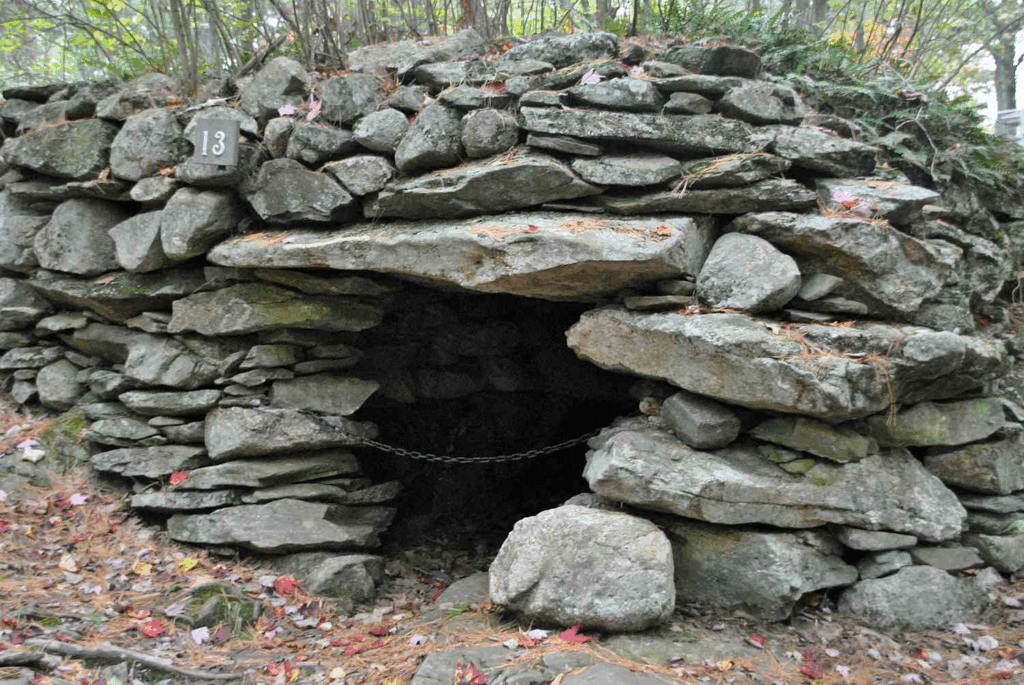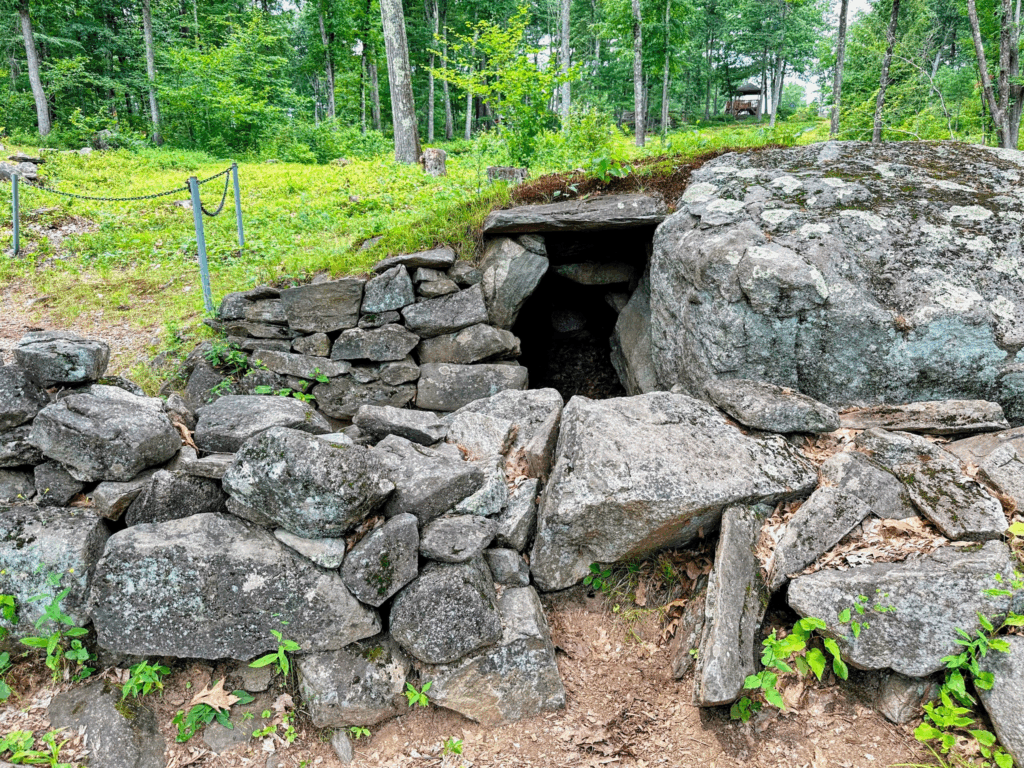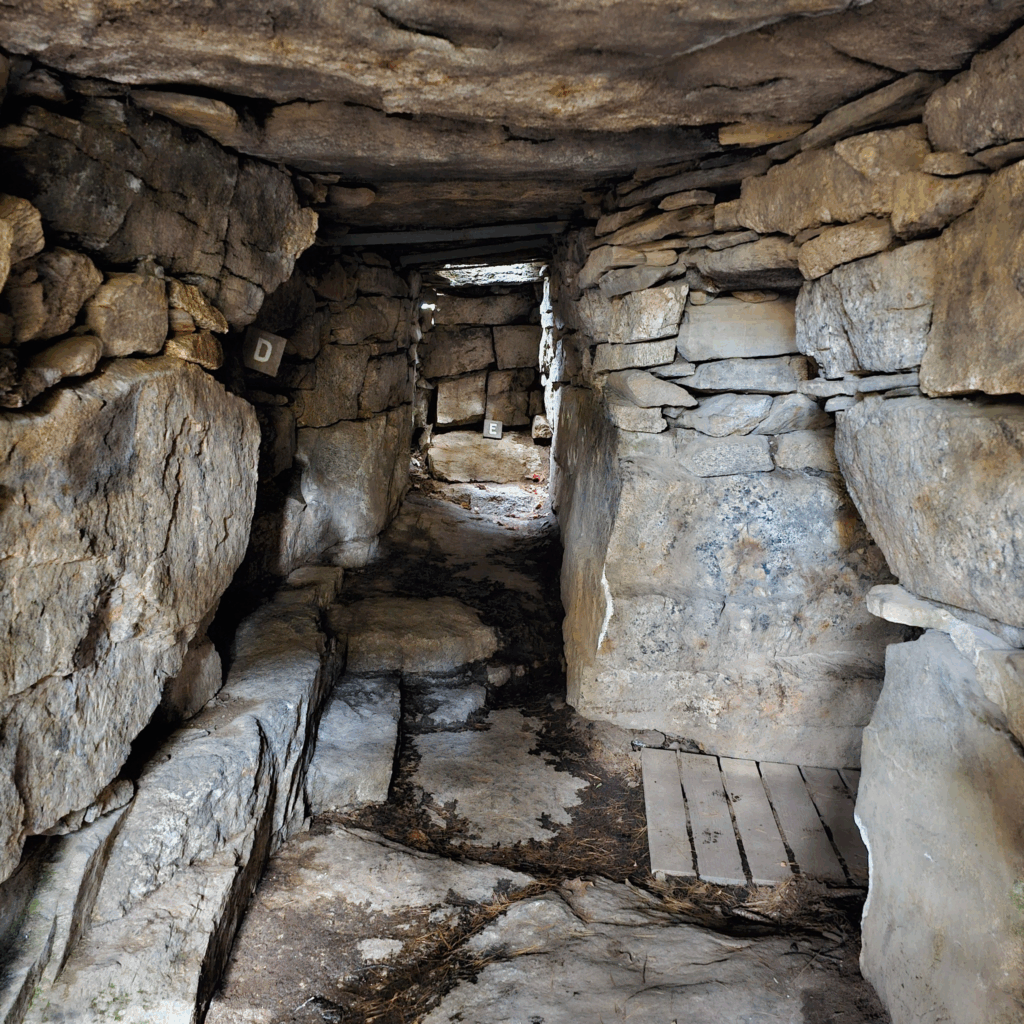In the forests of New Hampshire, a mystery older than America itself quietly waits to be understood.

Nestled among the pine trees of Salem, New Hampshire — far from the bustling cities and digital noise — lies a 30-acre archaeological riddle known as America’s Stonehenge. The name may sound dramatic, even exaggerated. But when you step onto the grounds of Mystery Hill, you quickly sense that something strange — and possibly ancient — happened here.
Stone chambers. Crude astronomical alignments. Megalithic slabs. Narrow tunnels. Cryptic carvings.

Some say this place was built by Native American cultures long before colonists arrived. Others whisper of Irish monks, Phoenician explorers, or even lost civilizations from before the Great Flood. Theories abound. Evidence is elusive. But one thing is certain:
These stones are not just stones. They are questions.

What Is “America’s Stonehenge”?
Located in southern New Hampshire, the site consists of:
- Interconnected stone walls
- Underground chambers with narrow entrances
- Large flat rocks arranged in table-like shapes
- Standing stones marking celestial events like solstices
- Carvings and inscriptions that some interpret as ancient scripts
While its exact origins remain unknown, carbon dating of nearby charcoal has suggested human activity in the area dating as far back as 2000 BCE.
“It’s a site that refuses to fit neatly into any one box,” says Dr. Emily Carter, a Northeast archaeologist. “It’s both fascinating and frustrating.”
Who Built It — and Why? The Competing Theories
1. Native American Builders
This is the most academically supported theory. Indigenous peoples of the Northeast — particularly the Abenaki and Pennacook tribes — may have used the area for ceremonial or astronomical purposes. Stone tool fragments, hammerstones, and quarry evidence point to prehistoric quarrying techniques consistent with local Native cultures.
But here’s the problem: there’s no oral history from local tribes connecting them to the site. That silence either suggests loss over time — or a different origin altogether.
2. Colonial Settlers
Some researchers argue the structures were built by 18th or 19th-century farmers, possibly the Pattee family, who lived on the land. The “sacrificial table” may have been a cider press. The walls, root cellars. Functional, not mystical.
But even this theory has holes: Why align them to solstices? Why tunnel-like chambers? Why the effort for a small farm?
3. Ancient Trans-Oceanic Visitors
Now we enter the fringe zone. Some believe that Old World civilizations — such as the Celts, Phoenicians, or even Egyptians — crossed the Atlantic long before Columbus and built the site.
Supporters point to markings that resemble Ogham (ancient Irish) and Phoenician script. Critics call them natural striations or recent forgeries.
Most mainstream archaeologists reject these claims, citing lack of pottery, metal tools, or DNA evidence.
“It’s romantic to imagine monks crossing oceans in reed boats,” says Dr. Carter, “but imagination is not archaeology.”
The Stars Above: Ancient Astronomical Precision?
Some of the site’s most compelling features are celestial alignments. Certain stones line up perfectly with sunrise and sunset points on the summer and winter solstices, as well as the spring and fall equinoxes.
Visitors on June 21st often witness the sun rise directly over a standing stone — a moment reminiscent of Stonehenge in England.
Could a group of ancient people, without modern instruments, have tracked solar movement so accurately? It’s either a remarkable coincidence — or clear evidence of intentional design.
The William Goodwin Factor: Truth or Tampering?
In the 1930s, a man named William Goodwin, a real estate dealer and amateur historian, purchased the land and began reconfiguring it to fit his belief: that Irish monks called Culdees had arrived in New Hampshire a thousand years before Columbus.
He moved stones. He reconstructed walls. He documented “ancient scripts.”
While his passion brought attention to the site, it also compromised its archaeological integrity. Modern scholars now face a difficult question:
What’s original… and what was rearranged?
Sacrifice Table or Cider Press? Symbol or Misunderstanding?
At the heart of the site is a massive flat stone slab with grooves that drain into a channel. Some call it a “sacrificial table,” invoking blood rituals and pagan rites.
Others insist it’s a colonial-era cider press — practical, not mystical.
But standing before it, in the dim light of the forest, imagination takes over. The groove seems too deep. Too ceremonial. Too intentional.